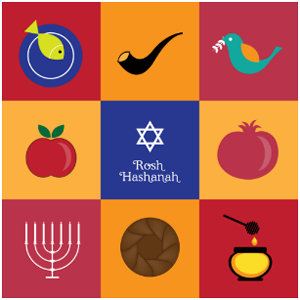
When September rolls round you know the autumn is approaching, the beginning of the school year is near and for Jewish people, September means that Rosh Hashanah is soon to be upon them.
What is Rosh Hashanah? “Rosh Hashanah” literally means “head of the year” because it marks the Jewish New Year. But why do Jewish people celebrate their New Year in September or October rather than in January? And what exactly is involved in a Jewish New Year celebration?
* * *
Why is the Jewish New Year date in September or October?
Whilst Rosh Hashanah doesn’t occur on the first month of either the Christian or Jewish calender, it does occur on the first day of Tishrei (the 7th month of the Jewish calendar). Since the Jewish calendar is lunisolar and differs from the Western calender it means that the date of the Jewish New Year changes every year, but it is always between the 5th of September and the 5th of October.
So why is the Jewish New Year celebrated on the first of Tishrei? Because according to rabbinic tradition it is believed that the creation of the world was finished on this date, and what better date to celebrate the beginning of a new year than the anniversary of the creation of the world?
Interpretations differ but some say that Tishrei 1st marks the completion of the creation of the World or Universe whilst others say it marks the completion of the creation of Man (or more specifically Adam and Eve).
* * *
Besides being the New Year, what is the meaning of Rosh Hashanah? What exactly is meant to happen on the anniversary of creation?
Rosh Hashanah is not just an anniversary. As well as being an anniversary, it is also Judgement Day. (Cue lightening and ominous thunderclaps!)
It is interesting that the astrology’s zodiac signs associate September time with Libra, the scales, because Jewish people believe that in this time of year God brings out his “day of judgement” scales to weigh up each person’s good and bad deeds.
The religious theory is that on Rosh Hashanah, if God deems a person to be extremely good, He writes their name down in His Book of Life and Blessing, whilst those who are deemed extremely evil have their names written down in the Book of Death and Misfortune.
What is the significance of your name appearing in either of these books? It is believed that those inscribed into the Book of Life and Blessing are destined for Heaven whereas those who don’t make it into this book are setting themselves up to go elsewhere. Some also believe that your coming year may be impacted depending on how you have been judged by God.
Most people are neither extremely good nor extremely bad, so their names do not become written down in either of these books on Rosh Hashanah. Instead, for the average Joe, God assigned a ten day period of grace. During this time peopel can repent for their sins, ask forgiveness and commit to changing their ways to be worthy of being inscribed in the Book of Life and Blessing rather than in the Book of Death and Misfortune.
The tenth day is marked by the solemnest Jewish holy day of the year: Yom Kippur, the Day of Repentence. On this day the Jewish people believe God makes his final judgement regarding which book a person should be allocated. These ten days between Rosh Hashanah and Yom Kippur are therefore a time of introspection, repentence and planning to make positive change over the coming new year and beyond.
If you’ve ever heard Jewish people wishing each other a Happy New Year or good wishes for Yom Kippur you might have heard the sayings:
- L’shana tova tikatvu, which means “May you be inscribed for a good year”
- Gmar chatima tova, which means “May you have a good signing” (in the books).
Some other more common blessings which don’t mention the inscription are “Shana Tova!” which means “Have a good year!” or “Shana tova ve metuka!” which means “Have a good and sweet year!”. (An alternative way of saying the latter is: “Shana tova u’metuka”).
* * *
How to celebrate Rosh Hashanah:
How are you supposed to celebrate Rosh Hashanah?
1.) Sounding the Shofar
One of the famous traditions of Rosh Hashanah is blowing on a ram’s horn trumpet called a shofar.
Why is a shofar blown on Rosh Hashanah?
The shofar is blown because the Bible says that’s what you’re meant to do (It quite literally says: “In the seventh month on the first day of the month shall be a solemn rest to you, a memorial proclaimed with the blast of horns.” Leviticus. XXIII, 24). However, that aside, there is more reason to sounding the shofar than this. The Bible doesn’t specify the reason, but scholars have suggested several theories why the shofar is sounded. Some of them include:
- Reminder of Judgement Day: Before Rosh Hashana the shofar is blown to remind people of the coming Judgement by God.
- Call to battle: Sounding a shofar was done in ancient times to call people to battle. On Rosh Hashanah, the shofar is sounded to call you to battle against your inner enemies, an internal fight against your darker side.
- Call to move forward: It’s symbolic of moving forward into a new year because in the days when the Israelites were wandering through the desert from Egypt to the Promised Land they were urged on and directed by the sounding of the shofar. In a similar way Rosh Hashana urges you forward and directs you towards a better direction.
- Reminder of the Biblical story of the Near Sacrifice of Isaac: One of the famous Biblical tales is that Abraham almost sacrificed his precious son, Isaac to God, but that God stopped him, telling him that human life is sacred and human sacrifices should not be made in the name of God. Instead God sent a ram which Abraham sacrificed, and the ram’s horn shofar is a reminder of this story, reminding us that in life, sometimes sacrifices are made for the sake of doing the right thing, but it is also important to remember the limits of acceptable sacrifices made in the name of God.
- Call to remind of God’s presence: There is a passage in the Bible that says that when the Israelites gathered around Mount Sinai to receive the holy scripture, the Torah, a shofar was sounded to announce that God was in their midst. Similarly, on Rosh Hashana, the shofar reminds Jewish people that God is always nearby, an ever more important thing to remember on Judgement Day.
The Shofar Sounds
There is a special way to blow a shofar:
- Long unbroken sound: At first, a long unbroken sound is made. Some interpret this as indicating the wholeness and complete happiness which life can bring.
- Intermittent toots (“broken” sounds) of the shofar: Some say the broken sounds that follow the initial unbroken tone indicate that life also has moments of pain. The sound of the shofar here is reminiscent of broken weeping.
- Final unbroken tone: The shofar ritual is finished with another long note, indicating that even if there is pain, there is still hope to be whole again, so people are encouraged not to give up when times are hard.
One hundred shofar tones are sounded each day as part of the shofar blowing ritual.
* * *
2.) Rosh Hashanah food
a.) Apple in honey
One of the Rosh Hashanah traditions is to eat an apple dipped in honey. This is a tradition that is thought to have arisen in late medieval times by the Ashkenazi Jews.
The significance of the apple is under debate, but possible reasons for why it is eaten include:
(i.) Symbolism:
- It symbolizes a wish for a sweet new year ahead. Even if the apple is a little sour, dipping it in honey expresses a hope that the bitterness can be turned to sweeter times.
- When an apple is sliced horizontally, the seeds and patterns inside the apple form a 5-pointed star and 10 little holes. In Hebrew, each number stands for a letter, and the numbers 5 and 10 spell out one acronym for the word “God” (hey, yud). This makes the apple particularly appropriate as a reminder of God’s presence.
- When an apple grows from a tree, first comes the first sign of fruit, and only then the leaves surround it, the bloom intensifies and the fruit grows. This is paralleled with the need to show your bud of righteousness as you observe God and try to be good. This must be done before the full beautiful bloom and growth of the fruit can come.
- One theory that is not true but is still a nice one, is that the apple represents the weakness of man because many lay-people think that the apple was the temptation from the Tree of Knowledge which got Adam and Eve booted out of the Garden of Eden. By dipping the apple in honey it symbolizes that personal weaknesses can be overcome. However, since the apple is likely not to have been the fruit from the Tree of Knowledge, this theory is unlikely to be true.
(ii.) Practical reasons like the fact that it’s easily obtainable throughout the world.
Sephardic Jews sometimes make a fruit compote called mansanada with apples.
~
b.) Rosh Hashanah honey cake (and other honeyed foods)
Like the apple dipped in honey, honey cake and other honeyed foods are traditional on Rosh Hashanah to mark a hope for a sweet year ahead.
Note that in Biblical times, the tradition would have referred to honey made from fruit (like date syrup) rather than bee-honey which was very expensive and rare.
Aside from honey cake, other traditional sweet dishes often eaten at Rosh Hashanah include challah bread dipped in honey, honeyed chicken with almonds, teiglach and tzimmes.
~
c.) Round challah
Whilst during the year a braided loaf of challah is eaten, on Rosh Hashana the challah is often round.
Why a round challah?
The round challah may symbolize several possible things:
- Cycle of the year: It may symbolize the cycle of the year that has passed and the new cycle that is about to begin.
- The circle of life: It also symbolizes that like a circle, although it is the end of a year, it also carries a wish for a good long life, like a circle that doesn’t have an end.
- Crown of Judgement: As God is responsible for judging on Rosh Hashanah, a round challah may symbolize a crown, reflecting His king-like role in judging His people.
- Reminder to change negative behaviours and habits: The word “shana” (as in Rosh haSHANA) has several meanings including “year”, “repeat” and “change”. The round challah may reflect these meanings in one visual symbol, effectively saying that it’s a good time of year to break out of the cycle of repetitive negative behaviours, and that it’s an opportunity to establish new positive patterns.
Carrots which carry a similar meaning to the circular challah, are also often eaten on Rosh Hashanah. They also carry connotations of a wish to be abundant and multiply. Some believe that the round sliced carrot “coins” symbolize this abundance and prosperity for the coming year.
~
d.) Pomegranate
If you look at Rosh Hashanah cards you’ll often notice a picture of a pomegranate decorating them. This is because the pomegranate is one of the traditionally consumed foods in the Jewish New Year. Why a pomegranate on Rosh Hashanah?
- Many seeds wishing fruitfulness: The many seeds of the pomegranates symbolize fertility and fruitfulness for the year ahead. A pomegranate to commemorate the new year is not only a Jewish tradition. In Mediterranean countries like Greece they also have pomegranates as part of their new year rituals, where the abundance of seeds is a symbol for good fortune and prosperity.
- 613 seeds for 613 good deeds: It is thought that there are 613 seeds in a pomegranate, the same number as the number of good deeds which are written in the scriptures (these good deeds are called “mitzvot”). By eating pomegranates you are effectively saying “in this year ahead may you do as many good deeds as are seeds in this pomegranate”. Others believe that even more importantly, eating a pomegranate reminds God of all the good deeds we’ve done over the past year and in the past.
~
e.) Animal heads
To celebrate the “head of the year”, animal heads like fish heads, and head-parts like tongue are sometimes eaten on Rosh Hashanah. Fish heads are popular because fish is another symbol of fertility and abundance, a good thing to eat if it brings these things in the new year. Some Jews eat Gefilte fish on the Jewish New Year.
~
f.) Foods whose names imply wishes for a good year ahead:
There are many other symbolic foods eaten on Rosh Hashanah each with its own meaning, including:
- Dates: The word for dates relates to the word תם “tum” which means “to end”, signifying and end of negative influences in life for a good year ahead.
- Black-eyed beans symbolizing good fortune and abundance. This meaning comes from the words for black-eyed beans: “rubiya” or “lubiya” which are cognates of the Hebrew word “harbeh”, meaning “many”, or abundance.
- Leek: Sephardic Jews in particular eat leeks in the form of fritters called keftedes de prasa. Leeks are also related to removing the negative in life because the word for leek (כרתי) is related to the word כרת “karat” which means “to cut”.
Greens are often associated with money, a good omen for wealth. - Gourd or pumpkin: Especially in Sephardic tradition, pumpkin-filled pastries are eaten called rodanchas. The word for gourd is קרא related to the word קרע “kera” which means “to rip”, symbolizing removal of negative things in life for the coming year.
- Beetroot: The word for beetroot in Hebrew is סלק “selek” which is related to the Hebrew word סלק “salek” meaning “depart”. This signified a wish to let all the negative influences in a person’s life depart.
* * *
3.) Tashlich (or Tashlikh)
Tashlich comes from the Hebrew word “Tishalch” which means “to send away”, and the ritual involves a display of “sending away” your sins.
People go to places of flowing water like a river or sea and empty their pockets into the water with a declaration that their sins are being carried away. Sometimes small pieces of bread or pebbles are put in the pockets beforehand so that you have something physical to send into the waters.
The Tashlich tradition is a ritual based on the words of the prophet Micah who said: “And you will cast all of your sins into the depth of the sea”.
Tashlich is not essential in order to repent and throw away our sins, but it can help some people to admit to anything they may have done wrong and it can help them along their path towards repentance. Tashlich alone does not make everything ok however. For that to happen people need to truly make a commitment to never repeat the same sins again. Only then does repentance really mean something.
* * *
When is Rosh Hashanah in the coming years?
2016: 2nd October, at sunset (start of Jewish Year 5777)
2017: 20th September, at sunset (start of Jewish Year 5778)
2018: 9th September, at sunset (start of Jewish Year 5779)
2019: 29th September, at sunset (start of Jewish Year 5780)
2020: 18th September, at sunset (start of Jewish Year 5781)
* * *
Related articles
Why do Jewish people eat challah?
Is honey good for you?
* * *
Related Products

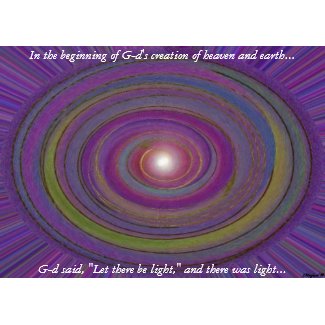


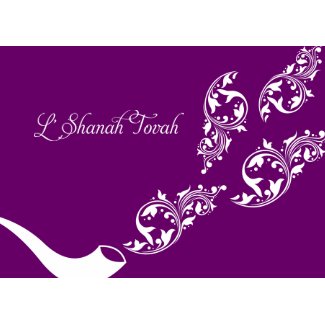

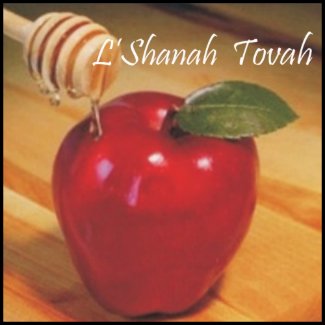
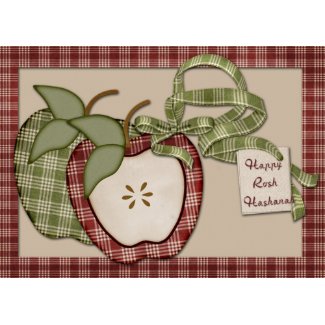

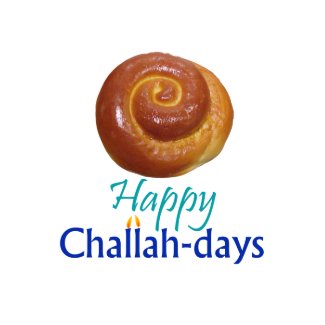
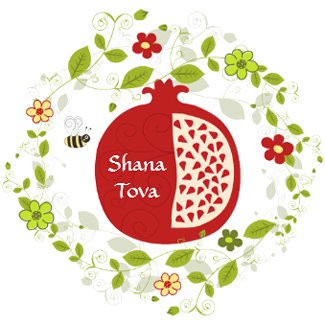



Great post! It always amazes me how little I know about my own religion!! Thanks for explaining things to me about our traditions.